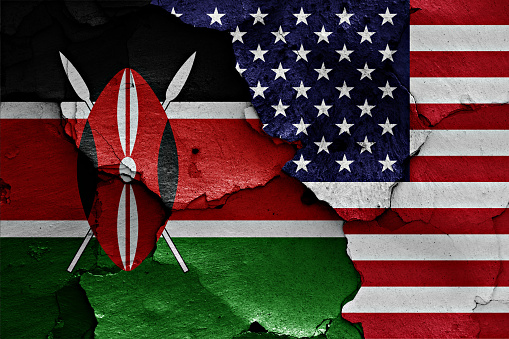Barriers to digital foreign trade in Kenya: A US perspective

The 2022 National Trade Estimate Report on Foreign Trade Barriers (NTE) is the 37th version in an annual series that highlights significant foreign barriers to US exports, US foreign direct investment, and US electronic commerce. The NTE Report identifies significant barriers, regardless of whether they are consistent or inconsistent with international trading rules.
Prepared by the Office of the United States Trade Representative (USTR), the NTE Report discusses key export markets for the United States, covering 60 countries; the European Union; Taiwan; Hong Kong, China; and, the Arab League.
Trade barriers in the context of the report are broadly defined as:
- Government laws and regulations or government-imposed measures, policies, and practices that restrict, prevent, or impede the international exchange of goods and services;
- Protection of domestic goods and services from foreign competition;
- Artificially stimulated exports of particular domestic goods and services;
- Failure to provide adequate and effective protection of intellectual property rights;
- Unduly hamper US foreign direct investment or US electronic commerce; or
- Impose barriers to cross-border data flows.
Kenya, through its membership to various regional organisations, including the Common Market for Eastern and Southern Africa (COMESA) and the Trade and Investment Framework Agreements (TIFA) with the East African Community (EAC), has entered into trade agreements with the USA. The conclusion of the above trade agreements have resulted in approximately $1.1 billion in total (two way) goods trade during 2019, making Kenya the 96th largest goods trading partner, and the undisputed top US trading partner in the East African region.
Following the announcement of the proposed US-Kenya Free Trade Agreement (US-KE FTA) in July 2020, currently under negotiations, the volume of trade between the two countries is expected to increase significantly. Globally, trade is increasingly conducted across digital platforms and involves the provision of digitised products and services, which in turn pose a new set of barriers for trade partners to navigate.
Despite the willingness of the countries to engage in ‘free trade’, the US has identified the following digital trade barriers within the Kenyan ecosystem:
- Data localisation requirements: By virtue of Kenya’s Data Protection Act (DPA), the country has adopted unclear and potentially restrictive provisions governing the cross-border transfer of personal information. This is contrary to the US negotiating objectives under the US-KE FTA, under which the US is pursuing minimal barriers to the cross-border transfer of data.
- Local Ownership requirement: In 2019, Kenya implemented the National Information, Communications, and Technology (ICT) Policy, developed with the intent to facilitate universal access to ICT infrastructure and services. However, the policy includes a local equity requirement that obligates firms providing ICT services to have at least 30 percent Kenyan ownership as well as preferences and incentives for Kenyan-owned ICT manufacturers. The obligation significantly increases the complexity of ICT companies with US origin establishing operations and providing digital services in the Kenyan market.
- Digital Taxation: The enactment of the Finance Act, 2021 applies a 1.5 percent digital services tax (DST) to nonresident businesses. The DST taxes gross revenue accrued through any “digital marketplace,” defined as an online platform which enables users to sell or provide services, goods, or other property to other users. The USTR, in the US-KE FTA negotiations, seeks to include prohibitions on tariffs on digitally transmitted products, thus the DST poses a considerable challenge, and will be subject to heated debate during FTA negotiations.
The Full NTE report is accessible: https://ustr.gov/sites/default/files/2022%20National%20Trade%20Estimate%20Report%20on%20Foreign%20Trade%20Barriers.pdf

